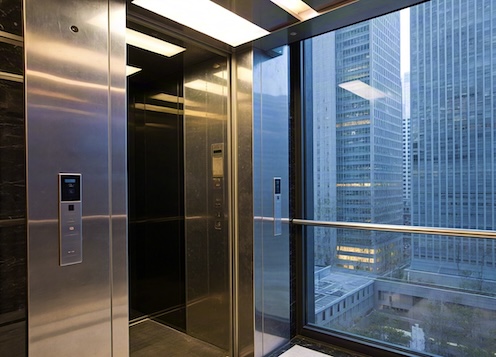In a renovation project of a commercial complex, a crisis triggered by size deviations quietly unfolded. The net dimensions of the shafts as indicated in the design drawings were 2600×2400 millimeters. However, upon on-site measurement, it was found that the concrete structure had deformed due to its age, resulting in an actual deviation of 80 millimeters. This seemingly insignificant error prevented the installation of the original elevator model's guide rail brackets, forcing the project to be halted for 23 days and incurring an additional cost of 180,000 yuan for customizing non-standard components - this is merely a typical example of the "conflict between drawings and reality" in the elevator installation field.

An authoritative survey of 200 ongoing projects revealed the prevalence of these issues:
68% of the existing buildings have size deviations in the shaft: factors such as concrete shrinkage, foundation settlement, and construction errors result in a deviation of 5-150 millimeters between the actual size and the design value.
42% of the projects did not reserve sufficient buffer space: problems such as insufficient pit depth and insufficient top floor height directly affect the installation of the elevator braking device and door opening mechanism.
31% of the machine rooms failed to meet the design requirements for load-bearing capacity: the floor load-bearing capacity of the old building's machine room was insufficient, forcing the elevator main unit to be downsized or undergo reinforcement and renovation.
Behind these figures lies an annual direct economic loss of over ten billion yuan and tens of thousands of project delays. A project manager from a real estate group confessed: "In the elevator installation process, 'discrepancy between the site and the drawings' is the most terrifying warning sign - it often indicates a triple loss of cost, schedule and safety."
When traditional measurement tools failed in the presence of complex building structures, an innovative technology provided a revolutionary solution. In a 400-meter super-tall project, facing the measurement challenge of dozens of elevator shafts throughout the building, the technical team used a handheld laser scanner with a 0.1mm accuracy to conduct 360-degree, non-stop scans of each shaft.
Technical breakthrough points:
Reverse modeling: Completed the processing of all shaft point cloud data within 72 hours, generating a 3D model that perfectly matched the actual structure.
Parameter correction: Automatically identified hundreds of size deviations, generating an installation plan including correction parameters such as the position of the guide rail brackets and the cutting dimensions of the door frames.
Collision warning: Through model simulation of elevator operation trajectories, potential collision risks between the carriages and the building structure were detected in advance.
Ultimately, this technology reduced the on-site adjustment workload by over 70%, and the installation accuracy reached ±1.5mm - far exceeding the national standard requirement of ±5mm. The project's mechanical and electrical supervisor commented: "This technology transforms 'uncontrollable' on-site conditions into 'quantifiable' data parameters, achieving 'zero rework' in elevator installation for the first time."
In the face of this millimeter-level dispute, consumers need to establish a systematic prevention and control system:
1. Pre-positioning of contract terms
Require suppliers to clearly include the "on-site re-inspection clause" in the contract, including:
Re-inspection time (suggested to be completed 30 days before the elevator arrives, after the completion of the building's foundation works)
Measurement tool accuracy (laser rangefinder error ≤0.5 millimeters, total station error ≤1 millimeter)
Deviation handling mechanism (clearly define the responsibility division and rectification plan when the standard is exceeded)
2. List of key indicators
Focus on verifying the following core parameters, with particular attention to:
Verticality of the shaft: Error of each 5-meter height ≤3 millimeters (equivalent to a total deviation of ≤60 millimeters for a 100-meter building)
Depth of the pit bottom: A 200-millimeter buffer space needs to be reserved (meeting the latest national standards)
Top floor height: Needs to meet the door opening height + 1500 millimeters (ensuring emergency rescue space)
Load-bearing capacity of the machine room: The load of the elevator main unit base needs to be ≤80% of the floor slab design load capacity
3. Digitalization of the acceptance process
Use IoT sensors for real-time monitoring, for example:
Install inclination sensors during the installation of the guide rails to provide real-time verticality data
Record the elevator car's running trajectory using a laser tracker to verify the consistency with the theoretical model
Generate a digital twin model containing hundreds of quality inspection points using the BIM platform
When consumers upgrade the size control from "experience-based judgment" to "data-driven", they will be able to gain the upper hand in this "invisible battle" of elevator installation. As industry experts have stated: "True elevator safety begins with the millimeter-level precise control during the installation of the first guide rail."
